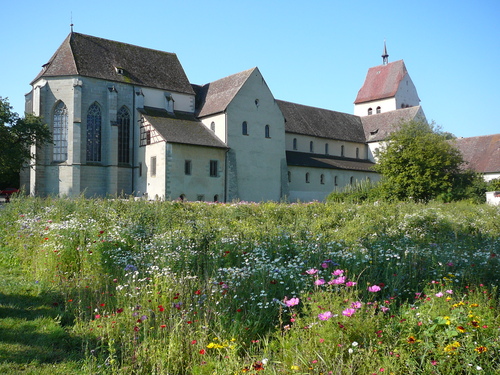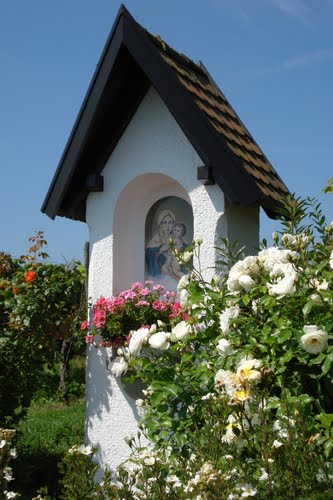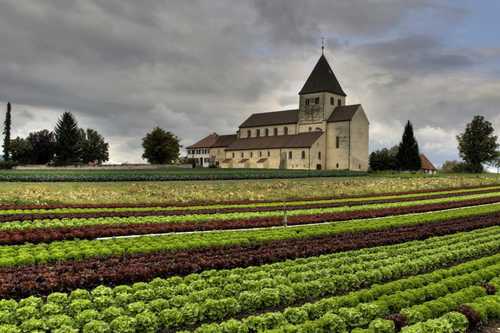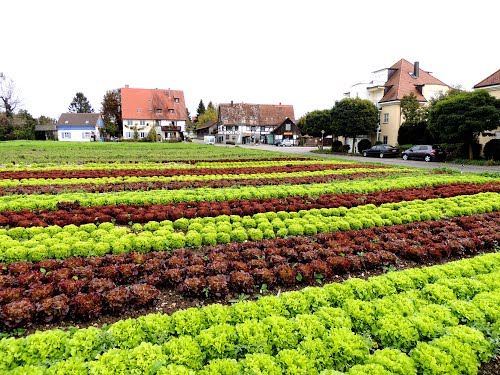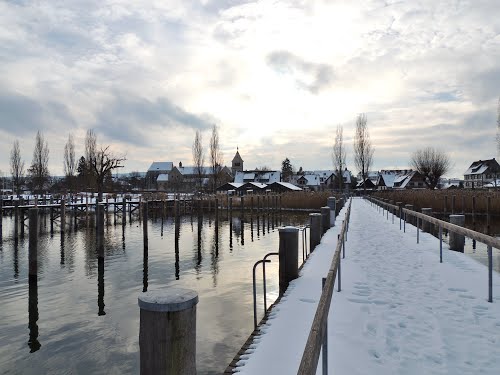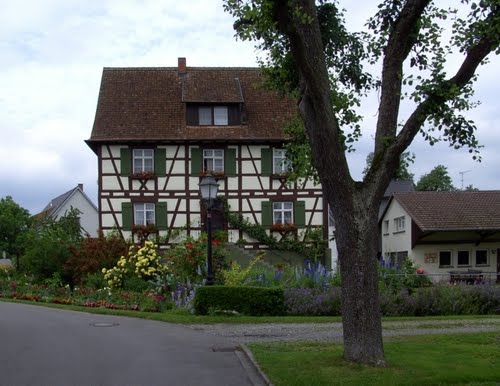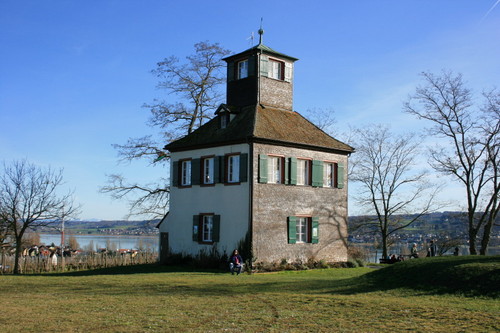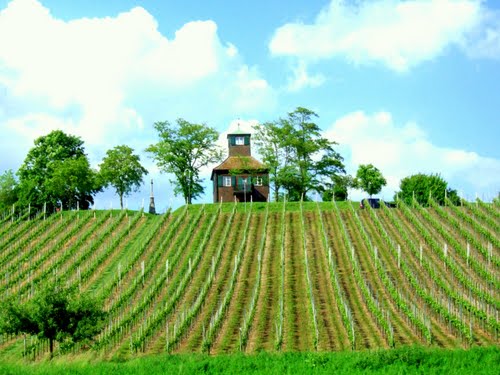Reichenau Island is an island in Lake Constance in southern Germany. It lies between Gnadensee and Untersee, two parts of Lake Constance, almost due west of the city of Konstanz. The island is connected to the mainland by a causeway that was completed in 1838. The causeway is intersected between the site of the former castle Schopflen and the eastern end of Reichenau Island by the 10-metre-wide Bruckgraben, a waterway which is spanned by a low road bridge that allows passage of ordinary boats but not of sailboats through its 95-metre course. Its total area is less than 7 square kilometers (3 square miles). The highest elevation on the island, the Hochwart, reaches 438.7 metres, or 43 metres above the lake surface.
It was declared a World Heritage Site in 2000 because of its monastery, the Abbey of Reichenau. The abbey's Münster is dedicated to the Virgin and Saint Mark. Two further churches were built on the island consecrated to St Georg, and to Sts Peter and Paul. The famous artworks of Reichenau include the Ottonian murals of miracles of Christ in St Georg, unique survivals from the 10th century. The abbey's bailiff was housed in a two-storey stone building that was raised by two more storeys of timber framing in the 14th century, one of the oldest timber-frame buildings in south Germany.
Among the Abbey's far-flung landholdings was Reichenau, a village on the upper Rhine in the municipality of Tamins in the canton of Graubünden, Switzerland, named for the Abbey.
Today the island is also famous for its vegetable farms. The Wollmatinger Ried next to the island is a big nature preserve, a wetland area of reeds which is used by many birds for the stopover during their annual migration.



